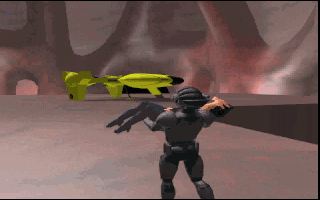Vladimir “VAG” Gneushev has uncovered the world’s simplest vector quantizer codec. An FMV format named AVS was used in a 1994 CD-ROM title called Creature Shock. Intraframes carry a vector codebook and vector map; interframes also carry a change map. The audio chunks are actually Creative VOC chunks. Complete details are here.
The strangest thing about this particular VQ codec is that the vectors can have a dimension of 3. For example, the intraframes are comprised of 3×3 pixel vectors. 3 is not divisible by many common video frame resolutions. This game ran on IBM VGAs in 320x200x256 color mode. But the resolution of the movies was actually 318×198. Look carefully at a screenshot from the game:

screenshot courtesy of MobyGames
The top row, bottom row, and 2 right columns are all left undrawn.
So, who wants to implement this format first? If the inspiration strikes you, here are some sample files.
